In the High and Far-Off Times (2008 and 2011) I blogged some photos of modern French and other designs for high-voltage electricity pylons that look like well-designed pieces of engineering, not a child’s failed Meccano project. I told you that the British Department of Energy and Climate Change had launched a competition for pylons for the British grid, then I forgot about it. Rather late, here are the winner and the five others that made the shortlist. This was actually announced - ahem - in October 2011. There hasn’t exactly been a rush anywhere to phase out the old lattices, so it’s still a good idea to publicise the new designs. The assessment included National Grid, the operator of the transmission network, and an eminent academic engineer served as one of the judges, so we can assume all the shortlist met engineering standards.
Winner: T-pylon from Bystrup of Denmark
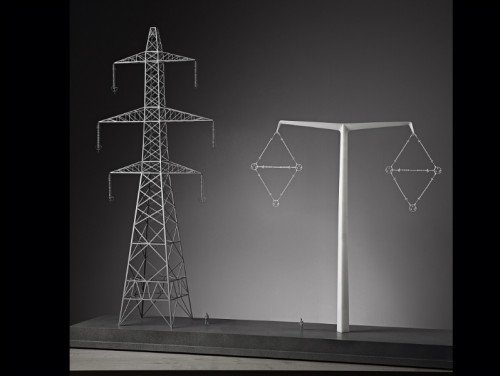
This clean but not very exciting design won in part because of its low height, making it less intrusive in the landscape: it cuts 35 14 metres off the existing lattices. National Grid are committed to this to the extent of building a line of six at their training centre in Nottinghamshire, and will offer the design as an option to communities affected by new lines.
Also-rans below the jump.
National Grid said they would work more on the next two with the designers.
Silhouette by Ian Ritchie
Totem by Christopher Snow
Flower Tower by Gustafson Porter
AL_A by Amanda Levete
Y-pylon by Knight Architects
Several of these incorporate advances on insulators. The ingenious suspended diamond frames of the winner are made out of mechanically strong insulators. Two designs go further and cut out separate insulators entirely. The arms of Knight Architects’ Y-pylon are silicon-sheathed so the cables can be directly attached. In Totem the projecting side-struts are made out of high-strength insulating composites.
Totem is a Fuller-style modular lattice, with thicker elements at the base. It could presumably be assembled on site in hard-to-access environments. You could even get the pieces in by mule.
My personal favourite is the Flower Tower, though it looks expensive to make. Any of the shortlist, or those I blogged earlier, would be a great improvement on current practice. There really is no excuse any more for utilities to continue to inflict cheap-and-nasty lattices on our landscapes. Though if you want to reinforce your view that civilisation is doomed, you only need to look through the complete gallery of entries.
Update 15 December
PS : Bystrup’s earlier Eagle pylon, deployed in quantity in Denmark.
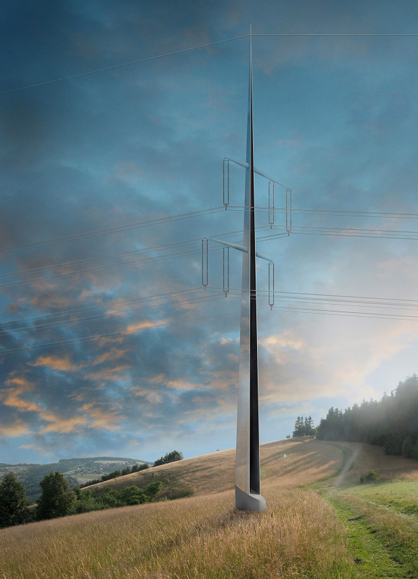
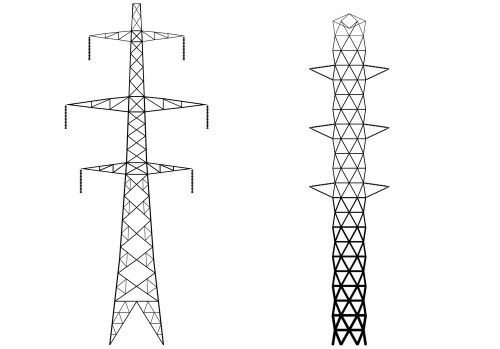
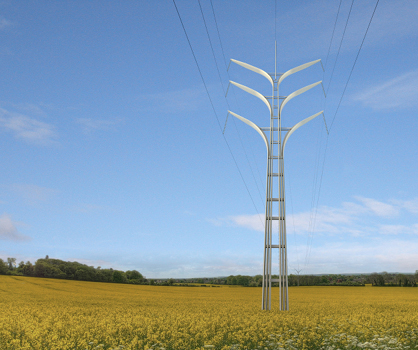
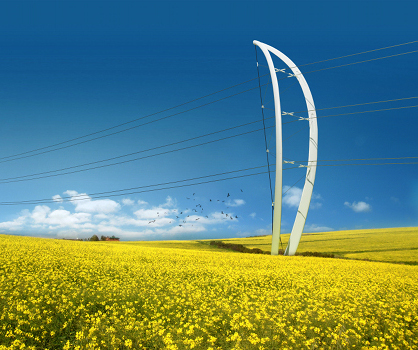
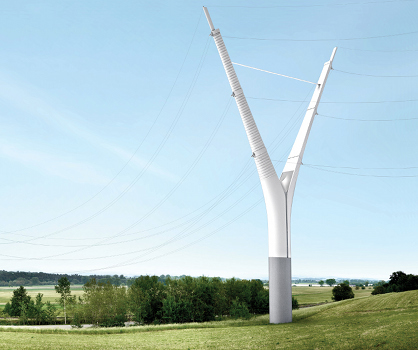
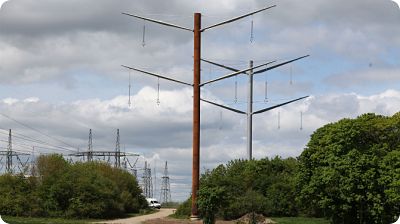
Leave a Reply